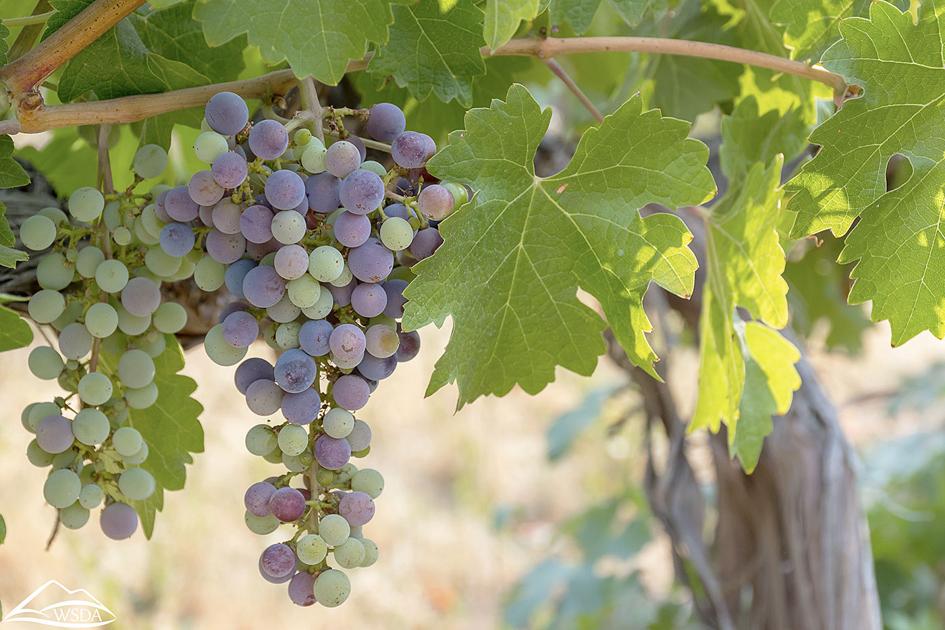If correct, says Francois Delmotte, who works at INRAE's campus in Bordeaux
Francois Delmotte在INRAE位于波爾多的營地工作,也是該項目的領導之一,
and is one of the project's leaders, the finding fits with certain historical facts.
他表示,如果是這樣,那么該發現和某些歷史事實相吻合。
Though the Mississippi valley was annexed from France by Britain and Spain in the mid-18th century, and passed eventually to the United States,
雖然,在18世紀中期,英國和西班牙從法國那里吞并了密西西比河谷,并最終轉讓給了美國,
many French settlers remained in the area and France retained trading links, particularly with New Orleans, for a long time.
但很多法國移民仍留在這個地區,法國在很長一段時間內保持著貿易聯系,尤其是與新奧爾良的貿易。
Dr Delmotte says it would not be surprising if, in the 19th-century age of steamships and naturalists,
Delmotte博士表示,如果是在19世紀蒸汽船和自然法學派時代,河岸葡萄被保存在涼爽干燥的容器中,
phylloxera survived on cuttings of V. riparia stored in a cool, dry hold to be brought to a botanical garden in France.
然后被帶到法國的植物園中,根瘤蚜蟲能夠在這些河岸葡萄的切口處存活下來,這并不奇怪。
Or, even more ironically, that it was imported with vines destined to cure their French cousins of an earlier imported blight—powdery mildew.
更具諷刺的是,它是與葡萄藤一起進口的,這些葡萄藤是要用來治療它們法國表親的白粉病。
The genetic diversity of European phylloxera is limited compared with that of its North American counterpart, says Dr Rispe.
和北美同類相比,歐洲根瘤蚜蟲基因的多樣性是有限的,Rispe博士說到。
That points to there having been only one or two introductions, with subsequent diffusion of the pest by people and their agricultural machines.
這表明,這種害蟲只被引入一次或兩次,隨后由于人類和他們的農業機械而擴散開來。
However, another of the paper's authors, Astrid Forneck of the University of Natural Resources and Life Sciences in Vienna,
但該論文的另一位作者,維也納自然資源和生命科學大學的Astrid Forneck表示,

says it remains a possibility that a separate introduction infested eastern Europe,
仍有可能是另一次引入讓這種害蟲在東歐大量滋生,
perhaps via the Austro-Hungarian empire's experimental vineyards at Klosterneuburg.
或許是通過奧匈帝國在克洛斯特新堡的試驗性葡萄園。
In America phylloxera attacks wild vines' leaves. It stimulates them to create galls in which it can live and feed,
在美國,根瘤蚜蟲襲擊葡萄藤的葉子。它刺激葉子產生蟲癭,以便它們生存和進食,
but which, from the plant's point of view, serve to isolate the problem. When it attacks cultivated vines, though, it goes for the roots.
但從植物的角度來看,這有助于區分看待這個問題。雖然當它攻擊種植葡萄藤時,它會攻擊根部。
These root galls open a plant to infection by bacteria and fungi, leading to its death.
這些根部的蟲癭讓植物遭受細菌和真菌的感染,導致它的死亡。
For a long time, researchers hunted for a single molecule, produced by the insect, that stimulated the growth of galls.
很長一段時間以來,研究人員都在尋找昆蟲產生的一種刺激蟲癭增長的單分子。
Blocking the action of this, they hoped, would phylloxera-proof all vines. But here the sequencing project produced a disappointment.
他們希望,阻止這一行為可以防止所有的葡萄藤出現根瘤蚜蟲。但基因排序項目的結果令人失望。
There is no such molecule. The researchers identified many genes—2,300 of them, more than a tenth of the insect's genome—
不存在這種分子。研究人員發現了很多基因——2300個,超過這種昆蟲基因組的十分之一——
that encode proteins which it secretes while feeding on the vine. These enable it to evade the plant's immune system while diverting resources from its host.
基因編碼蛋白質,這些蛋白質是它以藤本植物為食時分泌的。這使它能夠避開植物的免疫系統,同時從它的宿主轉移資源。
The work now begins of teasing out what each of those genes does, and, ultimately, how phylloxera manipulates a plant and adapts to a new host.
現在的工作是弄清楚每個基因的作用是什么,以及根瘤蚜蟲最終如何操控植物并適應新的宿主。
This information may in turn generate new weapons against the creature.
這些信息可能反過來會生成對付該生物的新武器。
That could be valuable in parts of viticulture's New World, such as Australia, where vines remain ungrafted and phylloxera is still a problem.
這在葡萄栽植新世界的部分地區可能很有價值,比如澳大利亞,在這些地方,葡萄藤仍是非嫁接的,并且根瘤蚜蟲仍是一個問題。
It might also help if the insect ever evolves the ability to evade the natural resistance of American vine roots
如果這種昆蟲進化出了避開美國藤本植物根系的自然抗性的能力,這也可能會有所幫助。
that currently stands between European growers and disaster. For Dr Forneck, this prospect is not outlandish.
目前這種自然抗性時歐洲種植者和災難之間的屏障。對于Forneck博士,這種預期并不奇怪。
The insect is already adapting to a warmer world, and shifting its range. Further shifts in its physiology are perfectly possible.
這種昆蟲已經適應了更溫暖的環境,并改變了它的活動范圍。進一步的生理變化是完全可能的。
譯文由可可原創,僅供學習交流使用,未經許可請勿轉載。



